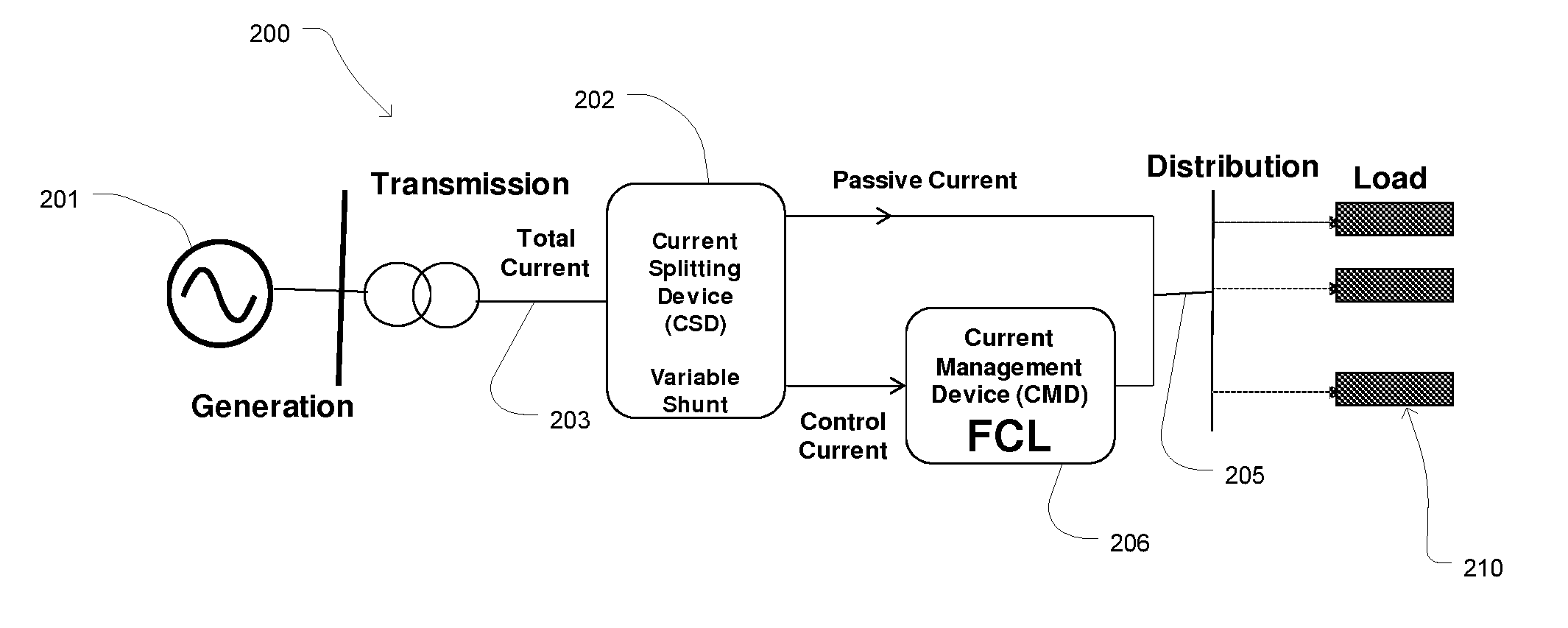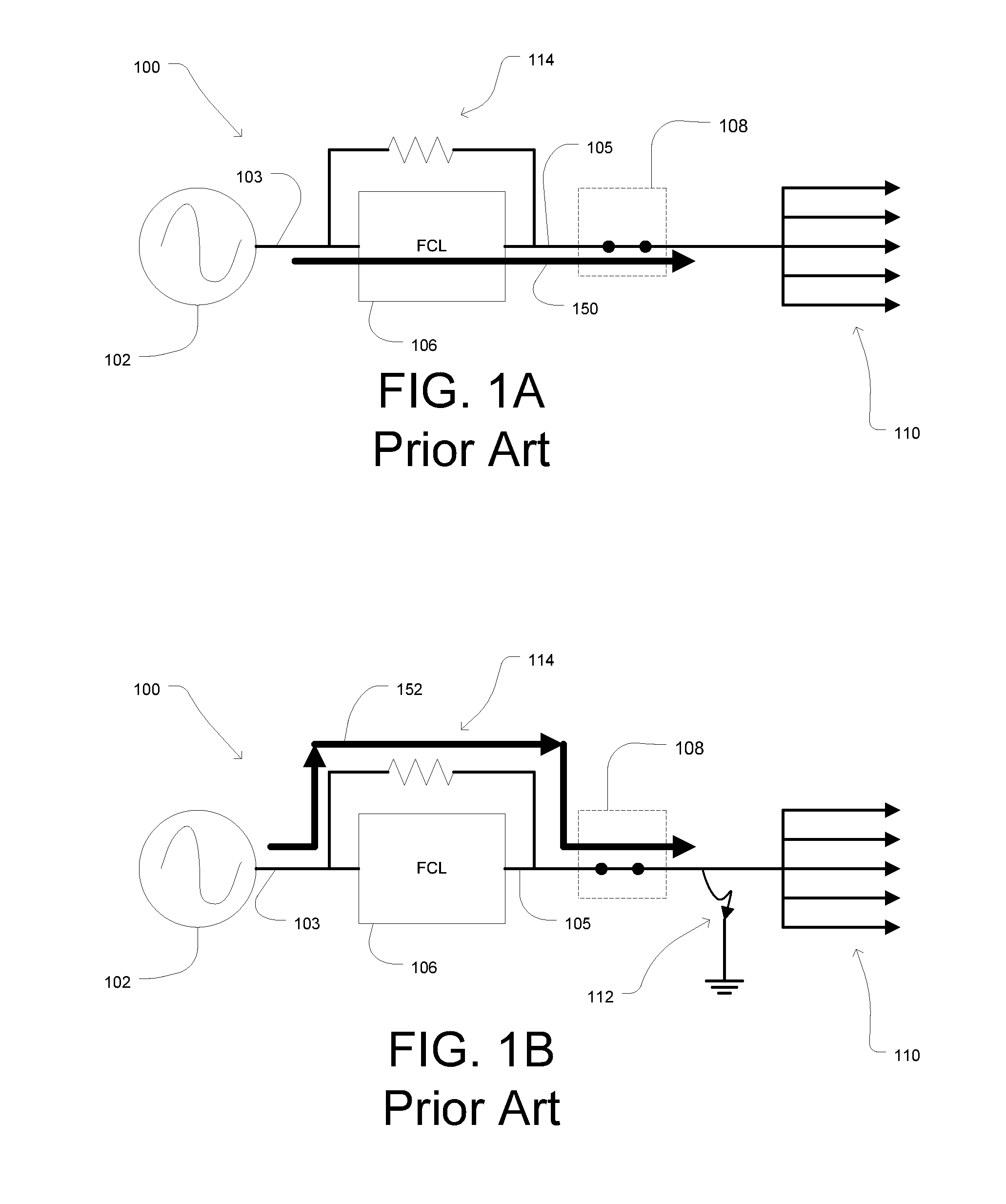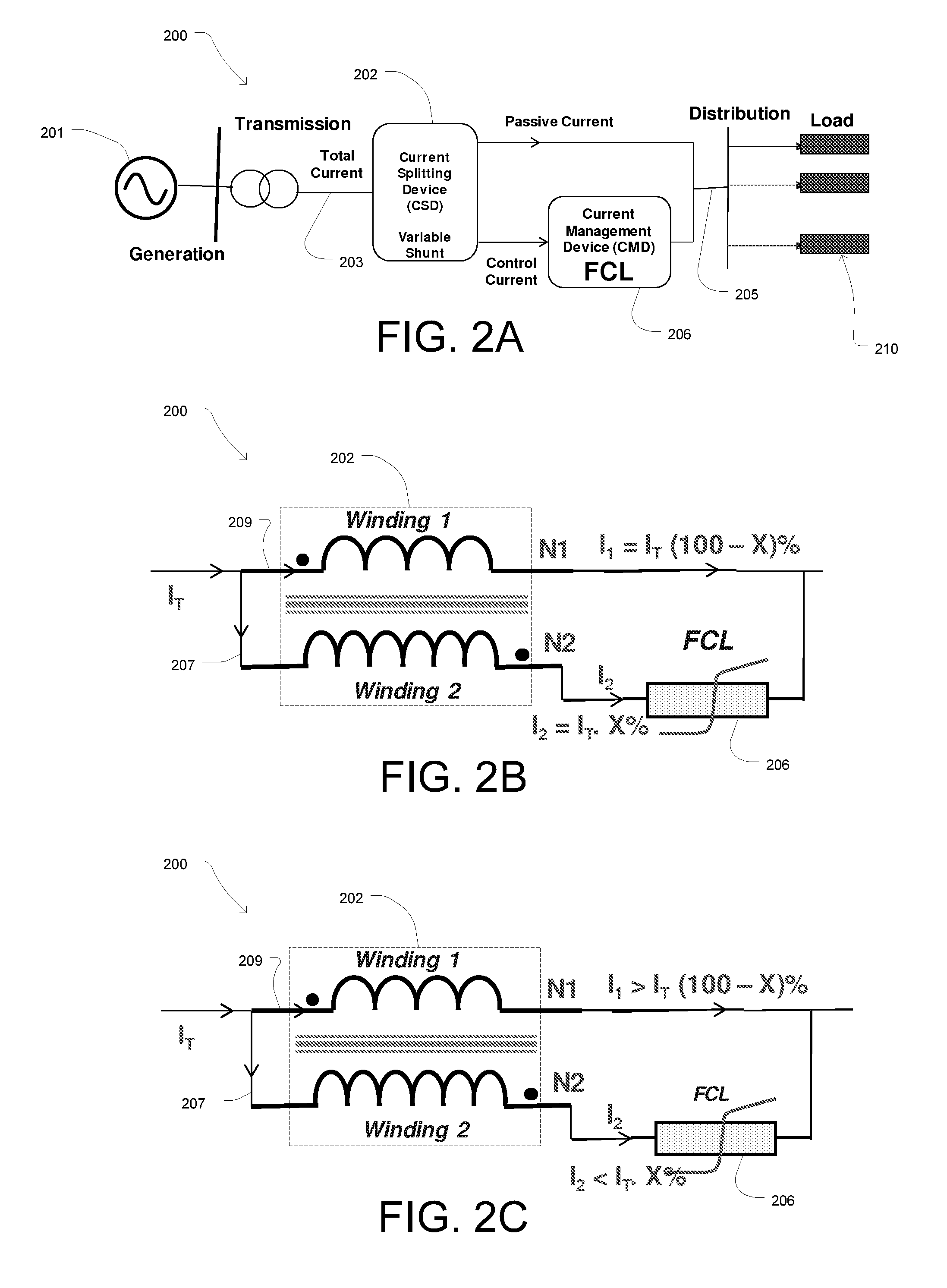Fault Current Limited System with Current Splitting Device
a current splitting device and fault current limiter technology, applied in the field of fault current limiters, can solve the problems of large load instantaneously appearing in the circuit, undesirable surge of current, and system fault current, and achieve the effect of reducing the fault current load, and reducing the cost and physical size of the fcl
- Summary
- Abstract
- Description
- Claims
- Application Information
AI Technical Summary
Benefits of technology
Problems solved by technology
Method used
Image
Examples
Embodiment Construction
[0025]FIGS. 2A-2C and 4 illustrate circuit diagrams of a fault current limiter (FCL) system 200 consistent with an embodiment of the present disclosure. In particular, the FCL system 200 may comprise a current splitting device 202 coupled with a FCL 206. FIG. 2B illustrates the FCL system 200 during steady state operation and FIG. 2C illustrates the FCL system 200 during a fault condition as further described below.
[0026]The FCL system 200 can be electrically connected in series intermediate an AC power source 201 and one or more electrical loads 210 via conductors 203 and 205. It will be appreciated by those of ordinary skill in the art that the FCL system 200 can be implemented in a variety of other applications and power system configurations in which fault current limiting is desirable. The particular power system depicted in FIGS. 2A-2C is therefore shown by way of example only and is not intended to be limiting.
[0027]It is contemplated that various types of FCLs can be impleme...
PUM
 Login to View More
Login to View More Abstract
Description
Claims
Application Information
 Login to View More
Login to View More - R&D
- Intellectual Property
- Life Sciences
- Materials
- Tech Scout
- Unparalleled Data Quality
- Higher Quality Content
- 60% Fewer Hallucinations
Browse by: Latest US Patents, China's latest patents, Technical Efficacy Thesaurus, Application Domain, Technology Topic, Popular Technical Reports.
© 2025 PatSnap. All rights reserved.Legal|Privacy policy|Modern Slavery Act Transparency Statement|Sitemap|About US| Contact US: help@patsnap.com



